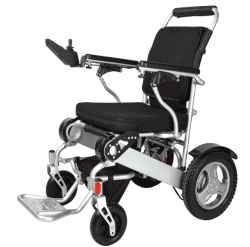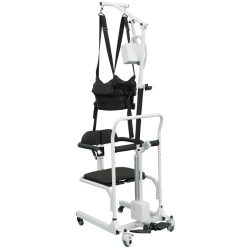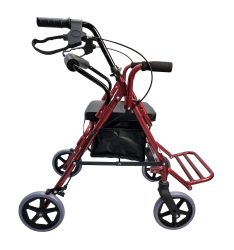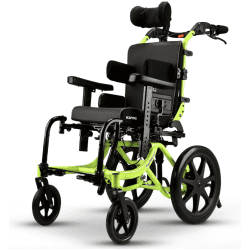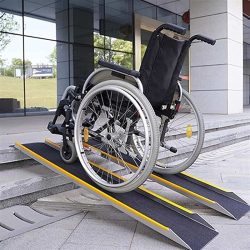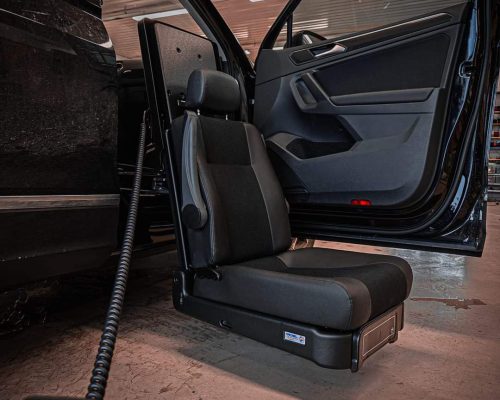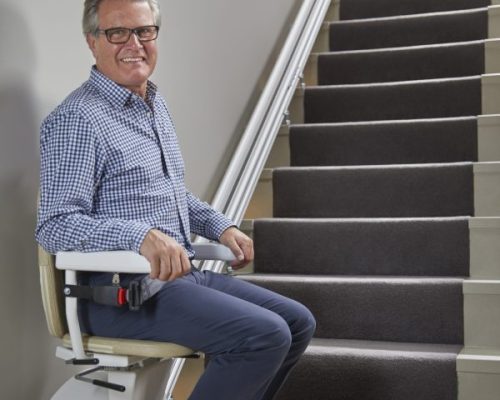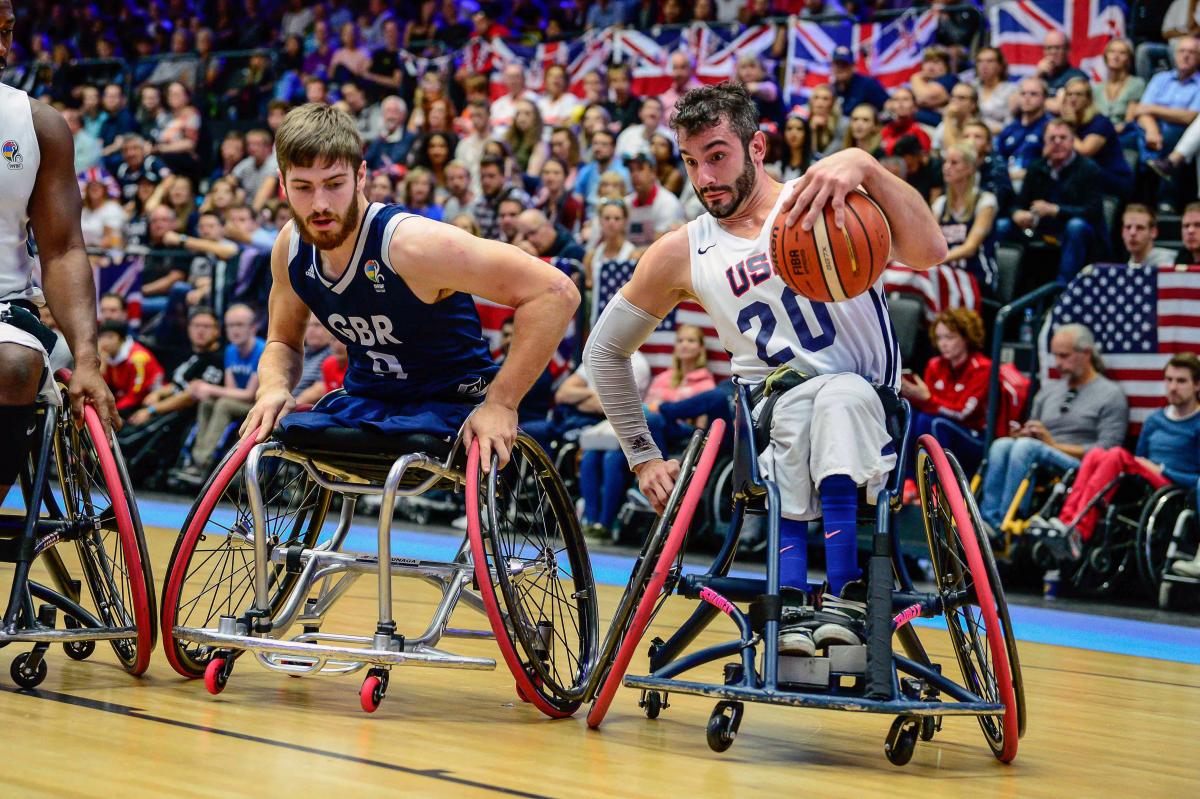Table of Contents
ToggleWheelchair basketball is one of the most electrifying and strategic sports in the Paralympics, combining speed, agility, and tactical brilliance. It has captivated audiences worldwide, showcasing the power of adaptive sports and the resilience of athletes who redefine physical limitations.
The sport has a massive global reach, with more than 100 countries participating in organized wheelchair basketball leagues. In the UK, it is the most popular Paralympic team sport, highlighting its significance in the adaptive sports landscape. Governed by the International Wheelchair Basketball Federation (IWBF), wheelchair basketball has evolved into a highly competitive and inclusive sport.
This guide dives deep into the history, rules, classification system, equipment, memorable Paralympic moments, and what to expect from Paris 2024. Whether you are an athlete, coach, or sports enthusiast, this comprehensive resource will enhance your understanding of wheelchair basketball at the highest level.
What is Wheelchair Basketball?
Wheelchair basketball follows the foundational principles of traditional basketball, with modifications tailored to wheelchair mobility. Governed by the IWBF, the game is played on a standard-sized basketball court with the hoop positioned at the regulation height of 10 feet (3.05 meters).
The most notable adaptation is the two-push rule, which allows players to push their wheelchairs twice before they must dribble, pass, or shoot the ball. This ensures fluid gameplay while maintaining fairness across varying levels of mobility.
With professional leagues across the United States (NWBA), Europe, and Asia, wheelchair basketball has become an internationally recognized sport, attracting top-tier talent and thrilling audiences with its dynamic playstyle.
Related: International Wheelchair Day
History of Wheelchair Basketball
Wheelchair basketball traces its roots back to World War II, when injured veterans sought ways to remain active and competitive. Originating in the United States in the 1940s, the sport gained traction among military rehabilitation programs.
The first official Paralympic wheelchair basketball tournament was held in Rome 1960, marking a turning point in the sport’s history. Over the years, it expanded globally, with significant milestones including:
- 1973: Establishment of the International Wheelchair Basketball Federation (IWBF).
- 1980s: Integration of standardized player classification for fairer competition.
- 2000s-Present: Technological advancements in wheelchair design, improving speed and agility for athletes.
![Ultimate Guide to Wheelchair Basketball Paralympics [History, Rules & Insights] History of Wheelchair Basketball](https://www.gilanimobility.ae/wp-content/uploads/2025/02/History-of-Wheelchair-Basketball.jpg)
Today, wheelchair basketball is one of the premier sports in the Paralympics, featuring men’s and women’s divisions, with increasing media attention and sponsorship backing.
Understanding the Game: Rules and Regulations
Court and Equipment
- The court dimensions are identical to standard basketball: 28 meters (92 feet) long and 15 meters (49 feet) wide.
- A basketball wheelchair is customized for agility, with angled wheels, anti-tip bars, and lightweight frames for optimal movement.
![Ultimate Guide to Wheelchair Basketball Paralympics [History, Rules & Insights] Wheelchair Basketball Paralympics Court and Equipment](https://www.gilanimobility.ae/wp-content/uploads/2025/02/Wheelchair-Basketball-Paralympics-Court-and-Equipment.jpeg)
Scoring System
- Standard basketball scoring applies:
- Field goals: 2 points
- Three-pointers: 3 points
- Free throws: 1 point
- Unlike able-bodied basketball, players must release their shot before completing a third wheelchair push.
Dribbling, Pushing, and Travel Rules
- Players can push their wheelchair twice before dribbling.
- A violation occurs if a player pushes three times without dribbling—similar to a traveling call in traditional basketball.
Fouls and Penalties
- Wheelchair contact fouls occur when a player deliberately bumps an opponent’s chair in a way that gives an unfair advantage.
- Charging fouls apply when a player aggressively moves into an opponent’s space.
- Technical fouls result from unsportsmanlike behavior, including excessive chair modifications.
Special Equipment & Technology
Lightweight and Specialized Chairs
Wheelchair basketball chairs are designed for performance. They are:
- Lightweight yet durable, often made from titanium or aluminum.
- Equipped with a fifth wheel to enhance stability and prevent tipping.
- Angled wheels for sharp turns, allowing players to pivot rapidly.
Innovative Design Features
- 5th-wheel technology enables better balance.
- Lower seat positioning increases player stability for shooting and dribbling.
- Custom fit options ensure comfort and reduce strain on the body.
Cost and Availability
A high-performance wheelchair basketball chair in the UAE can range from AED 11,000 to AED 26,000, depending on its features and customization. Many athletes and teams secure funding through government sports programs, sponsorships, and Paralympic development initiatives to obtain specialized equipment. Organizations such as the Dubai Club for People of Determination and the UAE Paralympic Committee play a crucial role in supporting athletes with access to professional-grade sports wheelchairs.
Explore our Sports Wheelchair
Memorable Paralympic Moments & Athlete Spotlights
Legendary Matches & Milestones
- Sydney 2000: Australia wins its first-ever gold medal in men’s wheelchair basketball.
- London 2012: The USA and Canada face off in one of the most competitive Paralympic finals.
- Tokyo 2020: The Netherlands secures its first women’s wheelchair basketball gold in history.
Player Classifications and Notable Athletes
Each player is assigned a classification score ranging from 1.0 (lowest mobility) to 4.5 (highest mobility). Teams must maintain a total classification of 14 points on the court to ensure fair play.
- Patrick Anderson (Canada): Widely regarded as the greatest wheelchair basketball player of all time.
- Mariska Beijer (Netherlands): A dominant force in women’s wheelchair basketball.
Paris 2024: Programme, Venue, and What to Expect
Programme and Group Lineups
The Paris 2024 Paralympics will feature men’s and women’s wheelchair basketball tournaments, with teams from around the world competing in round-robin group stages before entering knockout rounds.
Paris 2024 Venue: Bercy Arena
- Located in Paris, France, Bercy Arena will host the wheelchair basketball events.
- It has a capacity of 15,000 spectators, ensuring a thrilling atmosphere.
Frequently Asked Questions (FAQs)
How do you play wheelchair basketball in the Paralympics?
Players use specialized wheelchairs and follow basketball rules with adaptations in dribbling, pushing, and movement. The two-push rule replaces traditional dribbling.
Do you have to be disabled to play wheelchair basketball at the Paralympics?
Yes, Paralympic-level wheelchair basketball requires a medically classified disability. However, domestic leagues often allow able-bodied players to promote inclusivity.
How are wheelchair basketball players classified for the Paralympics?
Players are assigned a classification score (1.0 to 4.5) based on their functional mobility, ensuring fair competition.
Who is the best wheelchair basketball player in the world?
Patrick Anderson (Canada) is widely regarded as the greatest player, having won multiple gold medals.
Why do able-bodied people play wheelchair basketball?
Able-bodied players can participate in club leagues to encourage awareness, support inclusion, and increase team numbers.
What are the key rules of wheelchair basketball?
Key rules include the two-push rule, classification-based team composition, and wheelchair-specific fouls.

